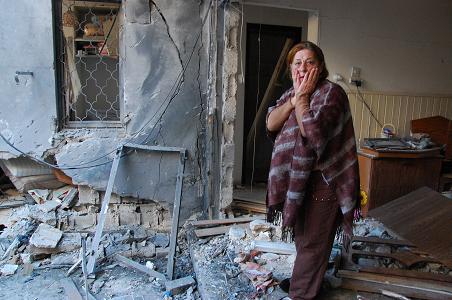Palestinian armed forces have fired 19 rockets, missiles and mortars from Gaza into Sderot and surrounding farming communities in Israel’s Western Negev region since September 4th.. Residents of Sderot and the Western Negev have experienced one of the worst periods of attack since Israel’s three week incursion into Gaza in January 2009.
In sum, Gazans have launched 424 aerial attacks into Israel since the cease fire on January 18, 2009:These attacks raise 2 important questions:
-
“Where do the attacks on the Western Negev and Sderot fit in the current middle east negotiation equation?”
-
“What are the implications for the Hamas regime in Gaza in these negotiations”?
These attacks on Israel, perpetrated by the Hamas regime in Gaza demonstrate that Hamas remains fully in control of Gaza.
Hamas uses every opportunity to remind the world that Hamas prevailed in the elections of January 2006 in all areas of the Palestinian Authority, elections that were overseen by the European Union and by representatives of the US government.
Photo: Noam Bedein
In terms of current negotiations now underway between Israel and the Palestinian Authority, Hamas leader Isamail Hanyia – who opposes these talks – constantly repeats that “No one is authorized to negotiate on behalf of the Palestinian people”. After all, Machmud Abbas’s term of office has expired, and no new Palestinian Authority elections are in sight, lest Hamas win yet another PA election.
The question posed by one million Israeli who live in rocket range of Gaza remains: If the Hamas attacks on Sderot and the Western Negev are not on the agenda of the the current negotiations, how can there be a genuine peace agreement?
Assuming that Israel and the PA get to the three main points agreed on: Borders, Refugees, Jerusalem. What about Gaza?
The entire political spectrum seems to understand that there are two contradictory options in order to have a “Two-State Solution”: Either include Hamas-controlled Gaza (technically a “Three-State Solution”) or leave Gaza out of the equation.
This brings us to an uncomfortable reality: Either we speak with Hamas, or we defeat it.
Most political parties reject the prospect of talking to a terrorist regime that continues committing crimes against humanity, and which refuses to amend its Charter calling for eliminating Israel and committing genocide against the Jewish people.
This leaves Israel with one scenario for a Two-State solution: Initiating the Gaza War 2, taking over the entire Gaza strip, and defeating Hamas.
In the words of Jerusalem Post’s Arab Affairs reporter, Khaled Abu Toameh, writing for the Hudson Institute*. “The US Administration seems to have completely forgotten about the Gaza Strip” and that “By being forced out of the Gaza Strip, Abbas lost direct control over some 1.5 million Palestinians, roughly half the Palestinians living in the Palestinian territories”. Even worse, analyzes Abu Toamah,
“The Palestinian and Israeli negotiators and their US sponsors are continuing to ignore the facts on the ground — namely that a radical, Iranian-funded Islamist state already exists, and it is in the Gaza Strip”.
in the context of a Two-State Solution,https://docs.google.com/Doc?docid=0AW_vbCHwtHoRZGNyM2NwbV8zMjg3ODhwcWMy&hl=en
Noam Bedein is a photojournalist, lecturer and founder/director of Sderot Media Center . He has conducted briefings and tours for government officials, diplomats, foreign press, and students from around the world.










